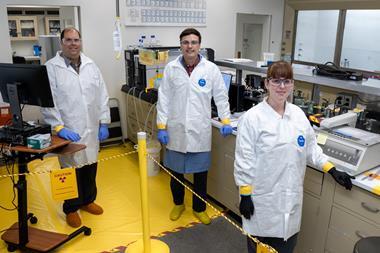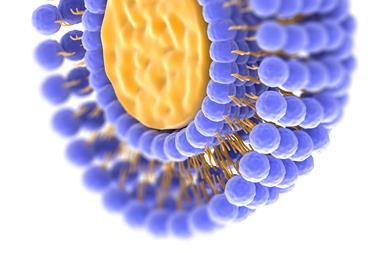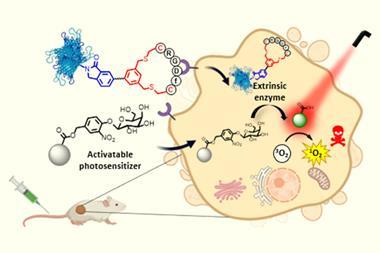A new implantable battery attacks cancer cells by starving them of oxygen while also producing reactive oxygen species that help to suppress tumour growth. In mouse studies, the device also appears to improve the efficacy of certain chemotherapy drugs that are activated by low-oxygen environments.
The new device was created by researchers in China from Fudan University, Shanghai and Zhejiang Normal University in Jinhua. They wanted to harness the redox reactions that take place in an electrochemical battery to regulate the microenvironment inside cancer cells. To do this, they developed a layered battery, made from biocompatible polyimide and zinc electrodes.
The battery’s flexible design allows it to be wrapped around a tumour, enabling it to scavenge oxygen that would otherwise have supported the cancer cells’ growth. Oxygen reduction that takes place in the battery creates reactive oxygen species that help to prevent tumour growth. As the battery is capable of self-charging under physiological conditions, it can continuously limit the availability of oxygen to the tumour.
When trialled in mouse models, the battery was shown to reduce tumour size by 26% within a week. This improved to an over 90% decrease in tumour size when used in combination with hypoxia-activated prodrugs – drugs that are activated under low-oxygen conditions, but which the researchers note had previously shown ‘unsatisfactory efficacy’ in clinical studies.
The team point out that the redox chemistry of similar battery systems could potentially be applied more widely in other therapeutic devices, for example to regulate inflammatory microenvironments, or for nerve stimulation.
References
J Huang et al, Sci. Adv., 2023, DOI: 10.1126/sciadv.adf3992

















No comments yet